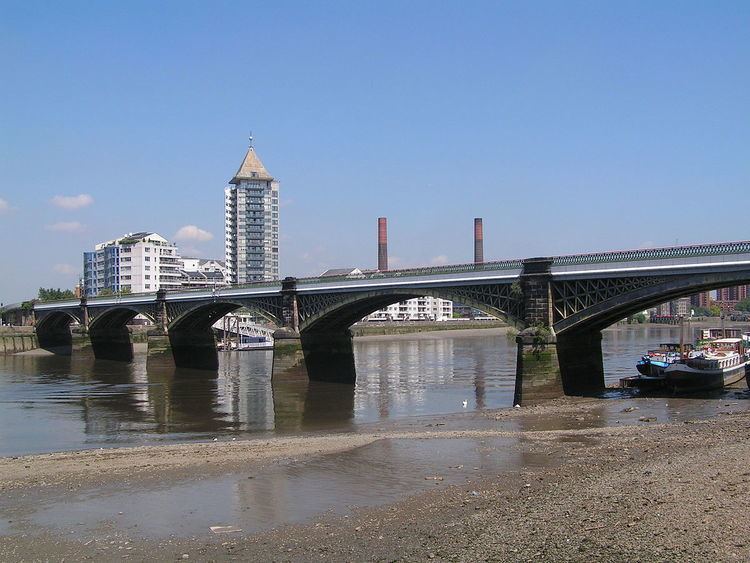Carries Railway Opened 2 March 1863 Longest span 42 m | Width 10 m Location London | |
 | ||
Heritage status Grade II* listed structure Address River Thames, United Kingdom Similar | ||
Battersea railway bridge refurbishment 2015
The Battersea Railway Bridge – originally called the Cremorne Bridge, after riverside public gardens in Chelsea – and formerly commonly referred to as the Battersea New Bridge – is a bridge across the River Thames in London, between Battersea and the extreme north-east part of Fulham — Chelsea Harbour or Imperial Wharf a 21st century-rebuilt area on the south side of a Chelsea Creek. The bridge is used by the West London Line of the London Overground from Clapham Junction to Willesden Junction.
Contents
History
The bridge was designed by William Baker, chief engineer of the London and North Western Railway, and was opened on 2 March 1863 at a cost of £87,000 (equivalent to £7,500,000 in 2015). It carries two tracks and consists of five 120-foot (37 m) lattice girder arches set on stone piers.
A three-arch brick viaduct carries the line on the north side of the bridge, with one arch having been opened to provide a pedestrian route under the railway, as part of the Thames Path. On the south side are four arches, two of which are used as storage for the residents of a houseboat community moored immediately downstream. Completion of a plaza containing a residential/leisure tower, Lombard Wharf is scheduled for 2017 immediately south-west of the bridge. The plans for which have entailed re-opening an arch of the viaduct to provide a continuous boardwalk.
The bridge was strengthened and refurbished in 1969, and again in 1992. During a high tide in late 2003, the structure was struck by a refuse-barge damaging some lower structural elements significantly: repairs were completed in early 2004.
In November 2013, planning permission was granted for the Diamond Jubilee Footbridge, extending the two central piers of the bridge upstream.
Trains crossing are subject to a 20/30 mph speed limit (locomotive-hauled traffic is restricted to 20 mph, all other traffic is limited to 30 mph).
The bridge was declared a Grade II* listed structure in 2008, providing protection to preserve its special character from unsympathetic development.
